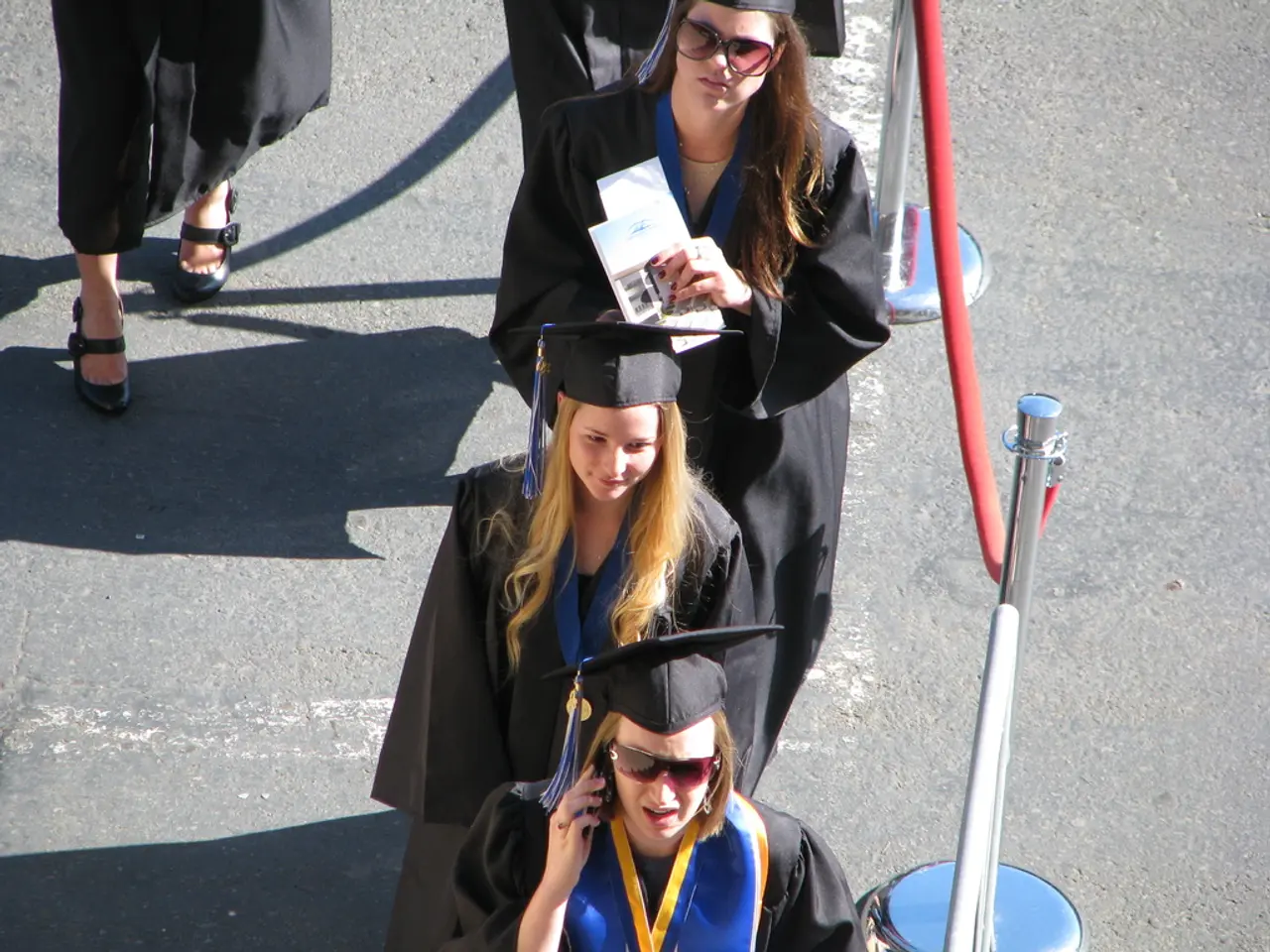Gangnam pupils abandoning school buildings, yet persisting with academic pursuits
In the bustling heart of Seoul, the districts of Gangnam, Seocho, and Songpa have long been known for their intense educational competition and high parental expectations. However, a recent trend has emerged that is causing concern among educators and parents alike: the steady increase in early dropout rates among high school students in these areas.
According to recent data, Gangnam-gu’s dropout rate rose from 1.4% in 2021 to 2.7% in 2024, Seocho-gu increased from about 1-1.3% in 2021 to 2.7% in 2024, and Songpa-gu jumped into the 2% range by 2023 after being near 1% previously[1][2][3].
This rising trend is notable because these three districts are known as areas with substantial academic pressure on students, driven by both the school system and the private education market[1][2].
The reasons behind this shift are multifaceted. One significant factor is the impact on college entrance exam preparation. Many students who drop out early in these districts do not abandon their studies but instead choose alternative academic paths, such as taking the GED (General Educational Development) test. This "all-in-one" strategy reflects their decision to leave traditional high school when they believe it is difficult to succeed there, switching to alternative qualifications to better prepare for the university entrance exams or improve their chances of admission[1][2].
The competitive environment and intense pressure have driven some students to quit the formal school system but continue their education independently, indicating a strategic move rather than a withdrawal from academic goals. This trend points to systemic stress in traditional schooling methods and suggests that these students are seeking more flexible or efficient routes to college preparation outside the regular high school system[1][2][5].
Another factor contributing to the rise in early dropout rates is the five-tier grading system introduced for first-year high school students this year. This system significantly narrows the differentiation among top-performing students, making it harder for elite applicants to stand out[4]. As a result, many students in competitive districts, like Gangnam, expect to spend a "fourth year" after graduation at specialized private academies devoted solely to Suneung prep[2].
The cost of this extra year can be substantial, with an extra year of Suneung preparation at these academies costing as much as 50 million won ($36,000) in tuition, lodging, and related expenses[2].
A poignant example of this trend is a second-year student named Kim from Gangnam, who left school in March to focus on Suneung after dropping from a top rank in middle school to the third tier in high school[1].
Critics warn that the pressure-cooker environment, both in school and in the private education market, is driving more students to abandon the standard curriculum altogether[1]. This extra year, often considered part of the academic plan from the outset, is raising concerns about the cost and potential negative effects on students' social development[1][2][5].
In conclusion, the increasing dropout rates in Gangnam’s top educational districts highlight a shift in how students are managing academic pressures: dropping out early not due to disengagement but to pursue alternative, concentrated preparation for the South Korean college entrance exam system[1][2][5]. This trend underscores the need for a reevaluation of the current educational system and its effects on students' mental health and overall well-being.
[1] https://www.koreatimes.co.kr/www/news/nation/2024/05/122_296454.html [2] https://www.hankyung.com/economy/article/2024051286412 [3] https://www.chosun.com/site/data/html_dir/2024/05/12/2024051200484.html [4] https://www.koreaherald.com/business/economy/20240512601886 [5] https://www.joongang.co.kr/news/20240512000179.html
- Students in Gangnam, Seocho, and Songpa, despite dropping out of traditional high school, are actively seeking education and personal growth by pursuing alternative learning paths such as the GED, indicating a strategic shift towards education-and-self-development in response to the intense academic competition and pressure.
- The emerging trend of early dropout rates within the high-pressure educational districts of Gangnam, Seocho, and Songpa reveals a focus on personal-growth, with students opting for a more self-directed and focused approach to learning, as they navigate the college entrance exam system in search of a more efficient path to university admission.




